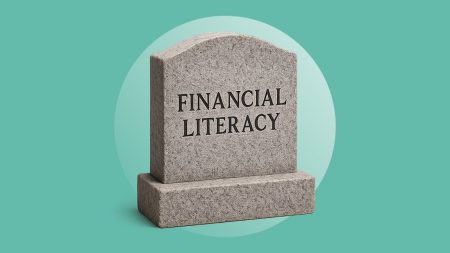10’000 Hours/Getty Images
It’s not uncommon for someone to have a couple of bank accounts, but James Royal, Bankrate’s investing and wealth management reporter, has about two dozen of them.
There’s a few pros to having multiple bank accounts (though there are a few cons too). You can earn a few hundred dollars by opening an account to get a bank bonus, for one. Or, you can take advantage of perks at different institutions. For example, you can have one checking account at an online bank that’s good for travel and another at a local credit union, which could get you access to lower rates on loans. Or you can keep multiple savings accounts to organize your savings goals.
Whatever your reason for keeping multiple accounts at different banks, Royal offers practical advice for manage them.
1. Track everything in a spreadsheet
Royal manually tracks every detail of each account, including balances, fees and prospective earnings, in a spreadsheet.
Why? Each bank account is different, with its own rules that are important to pay attention to. For example, some accounts may require a minimum balance to stay open or a minimum number of transactions within a certain period of time to earn the advertised APY.
Not only does his manual spreadsheet method help Royal centrally track everything, but it also helps him avoid putting his financial information online — something he prefers to avoid.
A basic spreadsheet setup for multiple accounts might look something like this:
| Account information | Account 1 | Account 2 | Account 3 |
| Account number | |||
| APY | |||
| Monthly fee | |||
| Transfer fee | |||
| Minimum balance requirements | |||
| Dormancy limit | |||
| Total Earnings | |||
| Balance |
2. Create unique passwords for every account
In keeping with best practices for financial security, Royal avoids repeating usernames or passwords. This makes it more difficult for hackers to get into your accounts.
When it comes to creating a unique password, the best practice is to use a random assortment of upper and lower case letters, numbers and symbols to make your password harder to guess.
Instead of opting for the remember password feature on your browser, consider using a password manager from a reputable company like 1Password or Bitwarden. The best password managers are encrypted and employ strong security measures to reduce the risk of getting hacked, such as engaging two-factor authentication to add another layer of protection to personal information.
3. Keep all accounts active
Bank accounts need to be kept active. Otherwise, they’re considered abandoned (usually after around five years) and get turned over to the state authority where they’re held in a process known as escheatment. Although you may be able to reclaim those funds, it’s far simpler to prevent that from happening in the first place.
Before your account is considered abandoned, you might also incur fees from your bank for account dormancy (also called account inactivity fees).
You can avoid both issues by keeping your accounts active.
- Confirm the minimum criteria to keep an account active. Record this information in your account tracking system.
- Give each account a “job,” whether it’s to have recurring payments set up for bills or something as simple as transferring money out of one account into another, which would keep both accounts active.
- Be mindful of minimum balance requirements. Every bank account has different rules when it comes to how much you’re required to hold in the account to remain active. Some institutions allow you to set alerts so you’ll know if your balance is at or below a certain threshold.
4. Minimize transfer fees
Focus on minimizing transfer fees between your accounts, Royal says. As you move money between accounts to keep them active or get the best rates, transfer fees can add up and eat into any potential interest earnings.
You can avoid these fees by choosing a fee-free checking account or savings accounts. Online savings accounts also tend to come with higher rates.
The cons of having too many accounts
Having multiple accounts offers several perks, like separating spending money and savings, but it’s also not a one-size-fits-all strategy.
The main things to watch out for when having multiple accounts are excessive fees and/or fraudulent charges, which can outweigh earnings and ultimately defeat the purpose of having multiple accounts.
Some other possible hurdles to consider before opening multiple accounts are:
- The time required in managing multiple accounts.
- Monthly service and minimum balance fees.
The good news is that opening or closing a checking or savings account won’t damage your credit report and won’t impact your credit score, as long as the accounts are in good standing.
Instead, banks may run a ChexSystems report, which shows banks a potential customer’s past deposits activity. Activity that could negatively affect a ChexSystems report includes unpaid negative balances, frequent overdraft fees, bounced checks and suspected fraud. Similar to credit reports, everyone has access to one free ChexSystems report each year on the reporting agency’s website.
Bottom line
Though having multiple accounts works for Royal, it takes a lot of work and sharp money management skills.
And spreadsheets aren’t for everyone. If you find it worthwhile to keep multiple bank accounts open, find an account tracking system that works for you to keep up with all account requirements.
Read the full article here









